-
 Bitcoin
Bitcoin $83,421.1497
5.02% -
 Ethereum
Ethereum $1,563.0598
2.87% -
 Tether USDt
Tether USDt $0.9996
0.02% -
 XRP
XRP $2.0203
2.75% -
 BNB
BNB $585.6045
1.37% -
 Solana
Solana $121.6479
7.67% -
 USDC
USDC $0.9999
-0.04% -
 Dogecoin
Dogecoin $0.1595
3.46% -
 TRON
TRON $0.2434
3.64% -
 Cardano
Cardano $0.6237
2.05% -
 UNUS SED LEO
UNUS SED LEO $9.3826
-0.32% -
 Chainlink
Chainlink $12.6439
4.28% -
 Avalanche
Avalanche $19.1037
3.16% -
 Stellar
Stellar $0.2343
1.58% -
 Toncoin
Toncoin $2.9106
0.18% -
 Shiba Inu
Shiba Inu $0.0...01217
4.42% -
 Hedera
Hedera $0.1682
0.34% -
 Sui
Sui $2.1863
3.30% -
 Bitcoin Cash
Bitcoin Cash $312.2126
7.00% -
 MANTRA
MANTRA $6.4115
-0.54% -
 Litecoin
Litecoin $76.0678
2.74% -
 Polkadot
Polkadot $3.5601
2.72% -
 Dai
Dai $1.0000
0.02% -
 Hyperliquid
Hyperliquid $15.5226
10.94% -
 Bitget Token
Bitget Token $4.3156
2.95% -
 Ethena USDe
Ethena USDe $0.9987
0.01% -
 Pi
Pi $0.6277
6.04% -
 Monero
Monero $208.5834
3.91% -
 Uniswap
Uniswap $5.2184
3.79% -
 OKB
OKB $53.1412
-0.11%
Why do the prices of some NFTs skyrocket in the secondary market?
NFT prices surge due to rarity, high demand, speculation, and celebrity influence, creating a volatile yet captivating market in the digital art world.
Apr 06, 2025 at 07:08 am
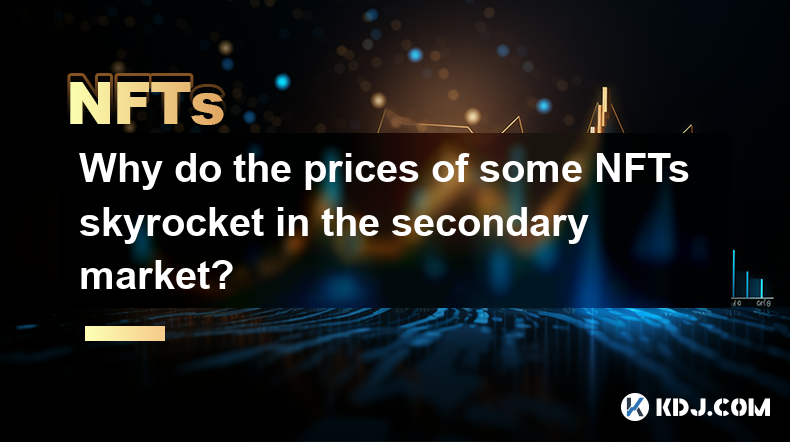
The phenomenon of NFT prices skyrocketing in the secondary market is a fascinating aspect of the cryptocurrency and digital art world. Non-Fungible Tokens (NFTs) have taken the digital world by storm, and their value can surge dramatically after initial sales. Several factors contribute to this price surge, including rarity, demand, speculation, and the influence of celebrities and influencers. Understanding these elements provides insight into the volatile yet captivating market of NFTs.
Rarity and Exclusivity
One of the primary drivers behind the skyrocketing prices of NFTs is their rarity. NFTs are unique digital assets, and their scarcity can significantly drive up demand. For instance, a limited edition NFT from a popular series or an artist can see its value increase manifold in the secondary market. Collectors and enthusiasts are willing to pay premium prices for items that are hard to come by. The exclusivity associated with owning a rare NFT adds to its allure, pushing prices higher as more people vie for ownership.
High Demand and Market Hype
The demand for certain NFTs can lead to a significant increase in their prices. When an NFT gains popularity, often fueled by social media buzz or coverage in mainstream media, it can create a frenzy among buyers. This high demand can cause prices to soar, especially if the supply remains limited. For example, the CryptoPunks collection saw a massive surge in value due to its popularity and the hype surrounding it. The market hype not only drives up current prices but can also create a speculative bubble, where buyers purchase NFTs in anticipation of future price increases.
Speculation and Investment
Speculation plays a crucial role in the price dynamics of NFTs. Many investors buy NFTs not just for their aesthetic or cultural value but as a form of investment. They anticipate that the value of the NFT will increase over time, allowing them to sell it at a higher price in the secondary market. This speculative buying can drive up prices quickly, especially when a particular NFT or collection gains attention. The potential for high returns attracts more investors, further inflating prices. This speculative bubble can lead to significant price spikes, as seen with various high-profile NFT sales.
Influence of Celebrities and Influencers
The involvement of celebrities and influencers can have a profound impact on the prices of NFTs. When a well-known figure endorses or purchases an NFT, it often leads to increased interest and demand. For instance, when a celebrity like Beeple or Jack Dorsey sells an NFT, it can create a surge in prices due to the association with their fame. Influencers on social media platforms can also drive up demand by promoting certain NFTs to their followers. This celebrity effect can lead to rapid price increases, as more people rush to buy NFTs associated with popular figures.
Historical Significance and Cultural Value
Some NFTs gain value due to their historical significance or cultural importance. For example, an NFT representing the first tweet by a notable figure or a piece of digital art from a groundbreaking artist can see its value skyrocket. These NFTs are not just seen as digital assets but as pieces of history or culture. Collectors and enthusiasts are willing to pay high prices for such items, driving up their value in the secondary market. The cultural and historical significance adds an extra layer of value, making these NFTs highly sought after.
Market Dynamics and Timing
The timing of an NFT's sale can also influence its price in the secondary market. If an NFT is sold during a period of high market activity or during a bullish trend in the cryptocurrency market, it can see a significant price increase. Market dynamics such as these can lead to sudden spikes in NFT prices. Additionally, the timing of when an NFT is listed for sale can impact its value. If it is listed at a time when there is high demand for similar items, the price can be driven up by competitive bidding.
Network Effects and Community Engagement
The value of an NFT can also be influenced by the network effects and community engagement around it. NFTs that are part of a larger ecosystem or community often see higher prices due to the added value of being connected to a vibrant network. For instance, NFTs associated with popular blockchain games or metaverse projects can see their value increase due to the active community surrounding them. The engagement and loyalty of the community can drive up demand and, consequently, prices. This network effect can lead to sustained price increases over time.
Technological Innovations and Platform Features
Technological innovations and features of the platforms where NFTs are traded can also impact their prices. Platforms that offer unique features, such as fractional ownership or enhanced security, can attract more buyers and drive up the value of the NFTs listed on them. Additionally, advancements in blockchain technology that improve the efficiency and security of NFT transactions can increase investor confidence and lead to higher prices. The technological aspect of NFTs is a crucial factor in their valuation and can lead to price surges in the secondary market.
Emotional and Psychological Factors
Emotional and psychological factors play a significant role in the pricing of NFTs. The excitement and thrill of owning a unique digital asset can drive buyers to pay premium prices. The fear of missing out (FOMO) can also lead to rapid price increases, as buyers rush to purchase NFTs before their value rises further. Additionally, the emotional connection to a particular piece of digital art or the pride of owning a rare item can justify higher prices in the minds of buyers. These emotional and psychological factors contribute to the volatile nature of NFT prices in the secondary market.
Legal and Regulatory Developments
Legal and regulatory developments can also influence the prices of NFTs. Positive regulatory news or the introduction of favorable laws can increase investor confidence and lead to price surges. Conversely, negative regulatory developments or legal challenges can cause prices to drop. The legal landscape surrounding NFTs is still evolving, and any changes can have a significant impact on their value. Investors closely monitor these developments, and their reactions can drive up prices in the secondary market.
The Role of Auctions and Bidding Wars
Auctions and bidding wars can lead to skyrocketing prices for NFTs. When an NFT is put up for auction, competitive bidding can drive the price far beyond its initial value. The excitement and competition of an auction can lead to emotional bidding, where buyers are willing to pay more than they initially intended. High-profile auctions, such as those for Beeple's artwork, have seen prices soar due to intense bidding wars. The auction format itself can create a sense of urgency and competition, leading to significant price increases in the secondary market.
The Impact of Market Sentiment
Market sentiment plays a crucial role in the pricing of NFTs. Positive sentiment, driven by successful sales, media coverage, or influential endorsements, can lead to price surges. Conversely, negative sentiment, such as concerns about the sustainability of the NFT market or reports of fraud, can cause prices to drop. The overall mood of the market can influence investor behavior and, consequently, the prices of NFTs in the secondary market. Understanding and monitoring market sentiment is essential for predicting price movements.
The Role of Blockchain and Smart Contracts
The underlying technology of NFTs, specifically blockchain and smart contracts, can also impact their prices. The security and transparency provided by blockchain technology increase trust in the authenticity and ownership of NFTs. Smart contracts enable automatic and secure transactions, which can attract more buyers and drive up prices. The technological foundation of NFTs adds to their value and can lead to price surges in the secondary market.
The Influence of Art and Cultural Trends
The art and cultural trends of the time can significantly influence the prices of NFTs. When a particular style or theme becomes popular, NFTs that align with these trends can see their value increase. For example, during periods when digital art is in vogue, NFTs from renowned digital artists can see their prices skyrocket. The alignment with current art and cultural trends can drive up demand and lead to higher prices in the secondary market.
The Role of Speculative Bubbles
Speculative bubbles can lead to dramatic price increases for NFTs. When a particular NFT or collection gains attention and becomes the focus of speculative buying, its price can surge rapidly. These bubbles are driven by the belief that the value of the NFT will continue to rise, attracting more buyers and further inflating the price. While speculative bubbles can lead to significant profits for early investors, they also carry the risk of sudden price drops if the bubble bursts. Understanding the dynamics of speculative bubbles is crucial for navigating the NFT market.
The Impact of Market Liquidity
Market liquidity can also influence the prices of NFTs. When there is high liquidity in the NFT market, it is easier for buyers and sellers to find each other, leading to more transactions and potentially higher prices. Conversely, low liquidity can lead to price stagnation or drops. The ease of buying and selling NFTs can impact their value and contribute to price surges in the secondary market.
The Role of NFT Marketplaces
NFT marketplaces play a crucial role in the pricing of NFTs. The features and policies of these marketplaces can influence the value of the NFTs listed on them. For example, marketplaces that offer low transaction fees or enhanced security can attract more buyers and drive up prices. Additionally, the reputation and user base of a marketplace can impact the demand for the NFTs it hosts. The dynamics of NFT marketplaces are a significant factor in the pricing of NFTs in the secondary market.
The Influence of Economic Factors
Economic factors, such as inflation rates and economic stability, can also impact the prices of NFTs. During periods of economic uncertainty, investors may turn to NFTs as a hedge against inflation or as a safe haven asset. This increased demand can drive up prices in the secondary market. Conversely, economic downturns can lead to decreased demand and lower prices. Understanding the broader economic context is essential for predicting NFT price movements.
The Role of Social Media and Online Communities
Social media and online communities play a significant role in driving up the prices of NFTs. Platforms like Twitter, Discord, and Reddit can create buzz around particular NFTs, leading to increased demand and higher prices. The power of social media to spread information and create trends can lead to rapid price increases in the secondary market. Additionally, online communities can provide support and validation for NFT buyers, further driving up demand and prices.
The Impact of Technological Advancements
Technological advancements in the NFT space can lead to price surges. Innovations such as improved blockchain technology, new NFT standards, or enhanced user interfaces can increase the attractiveness of NFTs and drive up demand. These technological advancements can lead to higher prices in the secondary market as buyers seek to take advantage of the latest developments.
The Role of Branding and Marketing
Branding and marketing efforts can significantly impact the prices of NFTs. Effective marketing campaigns can increase awareness and demand for particular NFTs, leading to higher prices. Additionally, strong branding can add perceived value to an NFT, making it more desirable to buyers. The role of branding and marketing in driving up NFT prices cannot be underestimated.
The Influence of Speculative Trading
Speculative trading is a major factor in the price dynamics of NFTs. Traders who engage in short-term buying and selling of NFTs can drive up prices through their speculative activities. The rapid buying and selling of NFTs can create price volatility and lead to significant price increases in the secondary market. Understanding the role of speculative trading is essential for navigating the NFT market.
The Impact of Regulatory Clarity
Regulatory clarity can impact the prices of NFTs. When there is clear regulation around NFTs, it can increase investor confidence and lead to higher prices. Conversely, uncertainty or negative regulatory developments can cause prices to drop. The regulatory environment is a crucial factor in the pricing of NFTs in the secondary market.
The Role of Institutional Interest
Institutional interest in NFTs can lead to price surges. When large institutions or investors enter the NFT market, it can drive up demand and prices. The involvement of institutional players can add legitimacy to the market and attract more buyers, leading to higher prices in the secondary market. The role of institutional interest is a significant factor in the pricing of NFTs.
The Influence of Market Manipulation
Market manipulation can also impact the prices of NFTs. Practices such as pump-and-dump schemes or wash trading can artificially inflate prices in the secondary market. These manipulative activities can lead to rapid price increases, but they also carry the risk of sudden price drops. Understanding the potential for market manipulation is essential for navigating the NFT market.
The Role of Emotional Attachment
Emotional attachment to an NFT can drive up its price. Buyers who have a strong emotional connection to a particular NFT may be willing to pay a premium for it. This emotional attachment can lead to higher prices in the secondary market as buyers seek to own NFTs that resonate with them on a personal level.
The Impact of Technological Limitations
Technological limitations can also influence the prices of NFTs. Issues such as high transaction fees or slow transaction times can impact the demand for NFTs and, consequently, their prices. Overcoming these technological limitations can lead to increased demand and higher prices in the secondary market.
The Role of Cultural Shifts
Cultural shifts can impact the prices of NFTs. As society's attitudes towards digital art and ownership evolve, the demand for NFTs can change. These cultural shifts can lead to price surges in the secondary market as more people embrace the concept of NFTs.
The Influence of Global Events
Global events can also impact the prices of NFTs. Events such as pandemics, economic crises, or technological breakthroughs can influence the demand for NFTs and lead to price surges. Understanding the impact of global events is essential for predicting NFT price movements.
The Role of Speculative Narratives
Speculative narratives can drive up the prices of NFTs. Stories and beliefs about the future value of an NFT can attract more buyers and lead to higher prices. These speculative narratives can create a self-fulfilling prophecy, where the belief in future value drives up current prices.
The Impact of Market Cycles
Market cycles play a significant role in the pricing of NFTs. During bullish market cycles, the demand for NFTs can increase, leading to higher prices. Conversely, during bearish cycles, demand can decrease, leading to lower prices. Understanding market cycles is essential for predicting NFT price movements.
The Role of Community Governance
Community governance can impact the prices of NFTs. When NFT projects involve their communities in decision-making, it can increase the perceived value of the NFTs and lead to higher prices. The role of community governance in driving up NFT prices cannot be underestimated.
The Influence of Technological Adoption
Technological adoption can drive up the prices of NFTs. As more people adopt the technology behind NFTs, the demand for them can increase, leading to higher prices. The role of technological adoption in driving up NFT prices is a significant factor in the secondary market.
The Impact of Speculative Fads
Speculative fads can lead to price surges for NFTs. When a particular type of NFT becomes a fad, it can attract more buyers and drive up prices. These speculative fads can lead to rapid price increases in the secondary market, but they also carry the risk of sudden price drops.
The Role of Emotional Investing
Emotional investing can drive up the prices of NFTs. Buyers who make decisions based on emotions rather than logic can drive up prices through their buying behavior. The role of emotional investing in driving up NFT prices is a significant factor in the secondary market.
The Influence of Regulatory Uncertainty
Regulatory uncertainty can impact the prices of NFTs. When there is uncertainty about the regulatory environment surrounding NFTs, it can lead to price volatility and potential price surges. The role of regulatory uncertainty in driving up NFT prices cannot be underestimated.
The Impact of Market Sentiment Shifts
Market sentiment shifts can lead to price surges for NFTs. When market sentiment shifts from negative to positive, it can drive up demand and prices. Conversely, a shift from positive to negative sentiment can lead to price drops. Understanding market sentiment shifts is essential for predicting NFT price movements.
The Role of Speculative Hype
Speculative hype can drive up the prices of NFTs. When there is a lot of hype around a particular NFT or collection, it can attract more buyers and lead to higher prices. This speculative hype can create a self-fulfilling prophecy, where the belief in future value drives up current prices.
The Influence of Technological Developments
Technological developments can impact the prices of NFTs. Advances in blockchain technology or new features in NFT platforms can increase the attractiveness of NFTs and drive up demand. These technological developments can lead to higher prices in the secondary market.
The Impact of Economic Trends
Economic trends can influence the prices of NFTs. During periods of economic growth, the demand for NFTs can increase, leading to higher prices. Conversely, during economic downturns, demand can decrease, leading to lower prices. Understanding economic trends is essential for predicting NFT price movements.
The Role of Speculative Mania
Speculative mania can drive up the prices of NFTs. When there is a frenzy of speculative buying, it can lead to rapid price increases. This speculative mania can create a bubble, where prices are driven up by the belief in future value. Understanding the role of speculative mania is essential for navigating the NFT market.
The Influence of Cultural Movements
Cultural movements can impact the prices of NFTs. When a particular cultural movement aligns with the themes of an NFT, it can drive up demand and prices. The role of cultural movements in driving up NFT prices cannot be underestimated.
The Impact of Technological Disruptions
Technological disruptions can lead to price surges for NFTs. When there are disruptions in the technology behind NFTs, it can impact the demand for them and lead to price volatility. Understanding the impact of technological disruptions is essential for predicting NFT price movements.
The Role of Speculative Narratives
Speculative narratives can drive up the prices of NFTs. Stories and beliefs about the future value of an NFT can attract more buyers and lead to higher prices. These speculative narratives can create a self-fulfilling prophecy, where the belief in future value drives up current prices.
The Influence of Global Economic Conditions
Global economic conditions can impact the prices of NFTs. During periods of global economic stability, the demand for NFTs can increase, leading to higher prices. Conversely, during periods of global economic instability, demand can decrease, leading to lower prices. Understanding global economic conditions is essential for predicting NFT price movements.
Common Questions Related to NFT Price Surges
What is the primary reason for NFT price surges?
The primary reason for NFT price surges is often a combination of factors, including rarity, high demand, speculation, and the influence of celebrities and influencers. Each of these elements can contribute to a rapid increase in the value of an NFT in the secondary market.How does rarity affect NFT prices?
Rarity significantly impacts NFT prices because it creates scarcity, which can drive up demand. Collectors and enthusiasts are willing to pay premium prices for rare NFTs, leading to price surges in the secondary market.Can speculation alone cause NFT prices to skyrocket?
Yes, speculation can cause NFT prices to skyrocket. When investors buy NFTs with the expectation of selling them at a higher price later, it can create a speculative bubble that drives up prices rapidly.What role do celebrities play in NFT price surges?
Celebrities can significantly influence NFT price surges by endorsing or purchasing NFTs, which increases their visibility and demand. The association with a celebrity can lead to rapid price increases in the secondary market.How do market dynamics and timing affect NFT prices?
Market dynamics and timing can affect NFT prices by influencing the level of demand and competition. Selling an NFT during a period of high market activity or during a bullish trend can lead to significant price increases.What impact does community engagement have on NFT prices?
Community engagement can drive up NFT prices by creating a network effect. NFTs that are part of an active and engaged community often see higher demand and, consequently, higher prices in the secondary market.How do technological innovations influence NFT prices?
Technological innovations can increase the attractiveness and security of NFTs, leading to higher demand and prices. Advances in blockchain technology or new features in NFT platforms can drive up prices in the secondary market.What role do emotional and psychological factors play in NFT price surges?
Emotional and psychological factors, such as the thrill of owning a unique asset or the fear of missing out, can drive buyers to pay premium prices, leading to price surges in the secondary market.How do legal and regulatory developments affect NFT prices?
Legal and regulatory developments can impact NFT prices by influencing investor confidence. Positive regulatory news can lead to price surges, while negative developments can cause prices to drop.What is the impact of auctions and bidding wars on NFT prices?
Auctions and bidding wars can lead to significant price increases for NFTs due to competitive bidding. The excitement and competition of an auction can drive up prices in the secondary market.
Disclaimer:info@kdj.com
The information provided is not trading advice. kdj.com does not assume any responsibility for any investments made based on the information provided in this article. Cryptocurrencies are highly volatile and it is highly recommended that you invest with caution after thorough research!
If you believe that the content used on this website infringes your copyright, please contact us immediately (info@kdj.com) and we will delete it promptly.
- Trump Signs Bill to Block IRS DeFi Tax Regulation
- 2025-04-12 09:00:12
- Cosmos Eureka Upgrade Enables Connectivity Between Ethereum and IBC Networks
- 2025-04-12 09:00:12
- The #pi coin price experienced a freefall of more than 80%
- 2025-04-12 08:55:13
- Immediate Goldarity Review - Is It a Scam or Legit?
- 2025-04-12 08:55:13
- BankSocial® Secura™ Advances a Bold New Standard in Fraud Prevention
- 2025-04-12 08:50:12
- Bitcoin (BTC) Shows Signs of Recovery After Plunging Over 30% From Its All-Time High
- 2025-04-12 08:50:12
Related knowledge
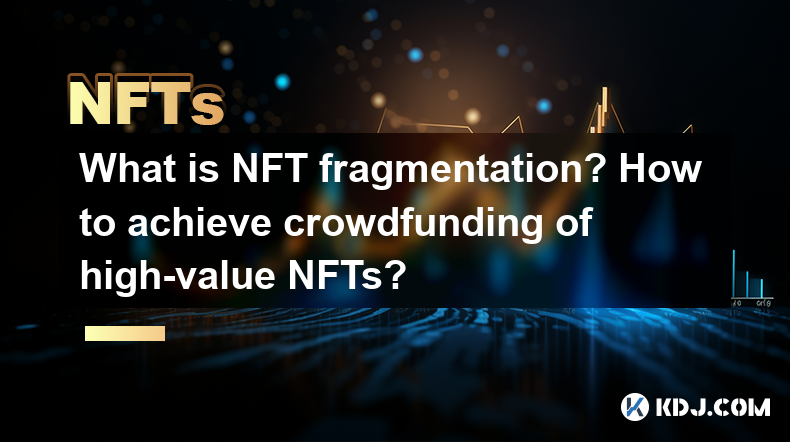
What is NFT fragmentation? How to achieve crowdfunding of high-value NFTs?
Apr 12,2025 at 12:00am
What is NFT Fragmentation? How to Achieve Crowdfunding of High-Value NFTs? NFT fragmentation is a process that allows high-value non-fungible tokens (NFTs) to be divided into smaller, more affordable pieces. This practice democratizes access to valuable digital assets, enabling more people to invest in and own parts of these NFTs. Fragmentation transfor...
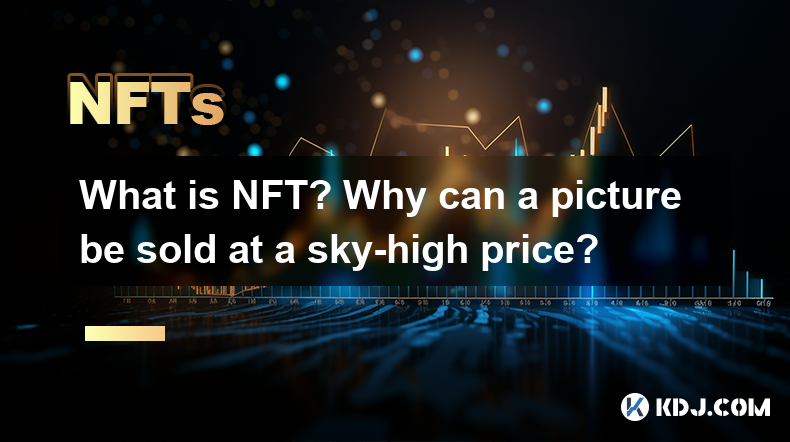
What is NFT? Why can a picture be sold at a sky-high price?
Apr 12,2025 at 05:28am
What is NFT? Why can a picture be sold at a sky-high price? Non-Fungible Tokens (NFTs) have taken the cryptocurrency world by storm, revolutionizing the way digital assets are bought, sold, and owned. But what exactly is an NFT, and why are some digital images fetching astronomical prices? Let's delve into the fascinating world of NFTs and explore the r...
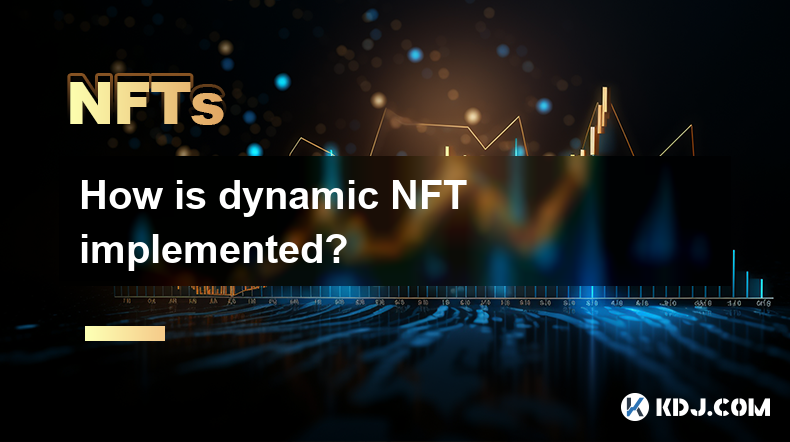
How is dynamic NFT implemented?
Apr 11,2025 at 04:56am
Dynamic NFTs, or dNFTs, represent a fascinating evolution in the world of non-fungible tokens. Unlike static NFTs, which remain unchanged once minted, dynamic NFTs can evolve, change, or update based on certain conditions or external data. This article will delve into the implementation of dynamic NFTs, exploring the technologies and processes involved ...
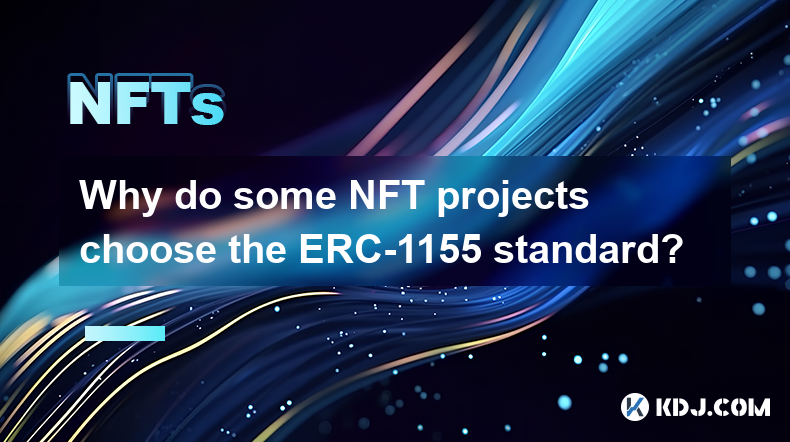
Why do some NFT projects choose the ERC-1155 standard?
Apr 08,2025 at 11:49am
The world of Non-Fungible Tokens (NFTs) has seen a significant rise in popularity and innovation, leading to the development of various token standards. Among these, the ERC-1155 standard has emerged as a versatile and efficient choice for many NFT projects. This article delves into the reasons why some NFT projects opt for the ERC-1155 standard, explor...

What is the essential difference between NFT and Bitcoin?
Apr 11,2025 at 12:14pm
The world of cryptocurrencies and digital assets has seen significant growth and diversification over the years, with Bitcoin and Non-Fungible Tokens (NFTs) being two of the most talked-about innovations. While both fall under the broader umbrella of blockchain technology, they serve different purposes and have distinct characteristics. This article wil...
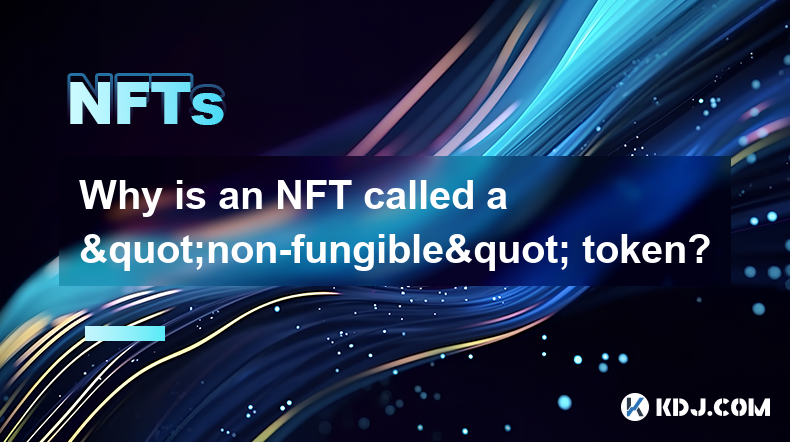
Why is an NFT called a "non-fungible" token?
Apr 11,2025 at 06:15am
An NFT, or Non-Fungible Token, is a unique digital asset that represents ownership or proof of authenticity of a specific item or piece of content, typically stored on a blockchain. The term 'non-fungible' is crucial to understanding the nature and value of these tokens. In this article, we will delve into the reasons why an NFT is called a 'non-fungibl...

What is NFT fragmentation? How to achieve crowdfunding of high-value NFTs?
Apr 12,2025 at 12:00am
What is NFT Fragmentation? How to Achieve Crowdfunding of High-Value NFTs? NFT fragmentation is a process that allows high-value non-fungible tokens (NFTs) to be divided into smaller, more affordable pieces. This practice democratizes access to valuable digital assets, enabling more people to invest in and own parts of these NFTs. Fragmentation transfor...

What is NFT? Why can a picture be sold at a sky-high price?
Apr 12,2025 at 05:28am
What is NFT? Why can a picture be sold at a sky-high price? Non-Fungible Tokens (NFTs) have taken the cryptocurrency world by storm, revolutionizing the way digital assets are bought, sold, and owned. But what exactly is an NFT, and why are some digital images fetching astronomical prices? Let's delve into the fascinating world of NFTs and explore the r...

How is dynamic NFT implemented?
Apr 11,2025 at 04:56am
Dynamic NFTs, or dNFTs, represent a fascinating evolution in the world of non-fungible tokens. Unlike static NFTs, which remain unchanged once minted, dynamic NFTs can evolve, change, or update based on certain conditions or external data. This article will delve into the implementation of dynamic NFTs, exploring the technologies and processes involved ...

Why do some NFT projects choose the ERC-1155 standard?
Apr 08,2025 at 11:49am
The world of Non-Fungible Tokens (NFTs) has seen a significant rise in popularity and innovation, leading to the development of various token standards. Among these, the ERC-1155 standard has emerged as a versatile and efficient choice for many NFT projects. This article delves into the reasons why some NFT projects opt for the ERC-1155 standard, explor...

What is the essential difference between NFT and Bitcoin?
Apr 11,2025 at 12:14pm
The world of cryptocurrencies and digital assets has seen significant growth and diversification over the years, with Bitcoin and Non-Fungible Tokens (NFTs) being two of the most talked-about innovations. While both fall under the broader umbrella of blockchain technology, they serve different purposes and have distinct characteristics. This article wil...

Why is an NFT called a "non-fungible" token?
Apr 11,2025 at 06:15am
An NFT, or Non-Fungible Token, is a unique digital asset that represents ownership or proof of authenticity of a specific item or piece of content, typically stored on a blockchain. The term 'non-fungible' is crucial to understanding the nature and value of these tokens. In this article, we will delve into the reasons why an NFT is called a 'non-fungibl...
See all articles























































































